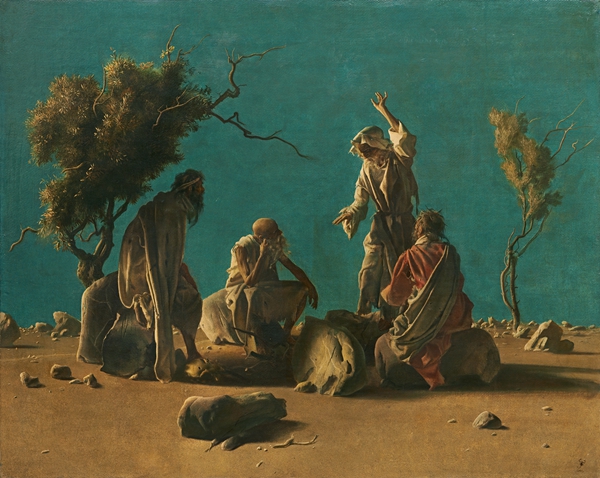
A new exhibition in Shanghai highlights the versatility of Italian artist Pietro Annigoni (1910-88), who is best remembered as the creator of a widely popular portrait for Queen Elizabeth II.
Titled Stare, the exhibition is held at Shanghai Jiushi Art Museum from April 2 to May 23 and showcases 53 artworks and documents that reflect the artist’s creative career that spanned 50 years.

According to the exhibition’s curator Ma Zhenzheng, Annigoni was a faithful follower of realism masters such as Leonardo da Vinci, Michelangelo and Raphael, making him stand out against the modernist and post-modernist artists that were prevalent during his time.
He was known for his portrait creations of several celebrities and royal members, especially his much-celebrated portraits of Queen Elizabeth II. One of the Queen’s portraits created in 1955 was so popular that it was inked on postage stamps and bank notes in several Commonwealth countries.
But Annigoni was adept in more than just portraiture. From monumental scenes to street sketches, world-famous celebrities and nameless figures, Annigoni brought to life every subject he depicted to life, Ma adds.
As a successor of the traditional Florentine School, Annigoni reinvigorated it in the 20th century, says Ma.
A great master with independent creativity and persistent belief, Ma says Annigoni almost “single-handedly took traditional painting to a new look and spiritual height in the 20th century”.
“He has an irreplaceable role in the history of art,” Ma says.
Annigoni “is a walking encyclopedia of painting techniques”, he adds.
“He masters nearly all painting techniques and is extremely good at using different materials to create paintings of various subjects.”
Born in Milan, Italy, in 1910, Annigoni was admitted to the Academy of Fine Arts in Florence at the age of 17. He began to showcase his work internationally in the 1950s.
Annigoni then completed a number of portraits for Queen Elizabeth II between 1954 and 1972, two of which are best known by the public-one portrait was for the Worshipful Company of Fishmongers in 1955, and the other was for the National Portrait Gallery in 1969.
Today, Annigoni’s creations can be found in the Louvre Museum in Paris, the Vatican Museum, as well as church frescos in and around Florence. His largest fresco, created between 1980 and 1985, is on the dome of the Monte Cassino Monastery.
The artworks on exhibition in Shanghai have been created using a wide range of materials, such as oil, color pencils and marker pens. Ma asks visitors to pay attention to the artworks created on oil tempera, an old painting medium made from colored pigments mixed with egg yolk that became less popular after oil paint was invented in the mid-1500s.
“Oil tempera is lower, dimmed and less shiny than oil paints,” Ma says, noting that some of the highlighted artworks of the exhibition have been created with oil tempera on board. These works include Self Portrait, the first piece to greet visitors at the hallway, and Anchorites’ Party-Anacoletti in the Desert.
“The delicate juxtaposition of the strokes and intricate changes from darkness to bright … completely reflect his solid artistic training and outstanding creative techniques,”Ma says.
Most of the artworks on exhibition have come from the collection of the Quan Shanshi Art Center in Hangzhou, Zhejiang province.
Quan Shanshi, 91, is a leading artist and professor at the China Academy of Art. The Quan Shanshi Art Center, established in 2014, is an exhibition space, academic institution and studio dedicated to the research and creation of oil paintings.
On the center’s website, Anchorites’ Party is introduced as “one of the most important creations of Annigoni”.
Shanghai Jiushi Art Museum, which is located on the sixth floor of the Roosevelt House on the Bund, is a nonprofit institution under the State-owned Shanghai Jiushi Group.
Last year, the museum presented its first international exhibition featuring Norwegian expressionist artist Edvard Munch, which “opened the gate of the Jiushi Art Museum to international artists and cultural exchanges”, says Sun Donglin, director of the museum.
Sun says Annigoni’s exhibition is part of the museum’s efforts to “bring high-quality cultural content to the historical buildings on the Bund”.